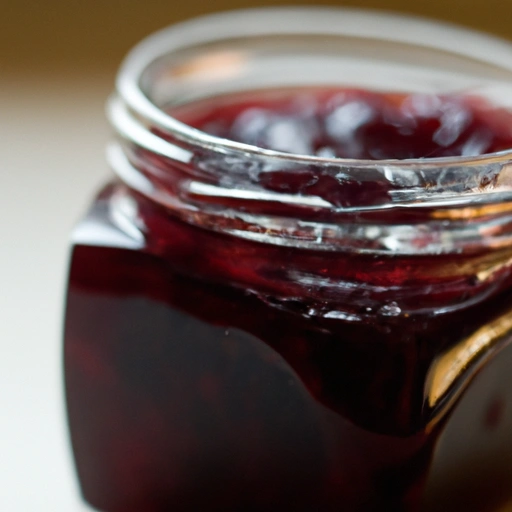Jam
Description

Jam is a sweet, fruit-based spread that is a staple in many households and cuisines around the world. It is created by cooking fruit with sugar until the mixture thickens and sets, often with the addition of pectin to aid gelling. Jams are preserved through sugar content and canning, making them a convenient and long-lasting option for adding fruity flavors to various dishes.
Common uses
Jam is commonly used as a spread on bread, toast, and pastries, or as a filling for cakes and doughnuts. It can also be incorporated into sauces and salad dressings or used as a glaze for meats and desserts.
Nutritional value
Calories
A typical serving of jam (1 tablespoon or about 20 grams) contains approximately 50-60 calories.
Protein
Jam is not a significant source of protein, with less than 1 gram per serving.
Fat
Jam generally contains negligible amounts of fat.
Carbohydrates
Most of the calories in jam come from carbohydrates, primarily sugars, with a typical serving containing about 13-15 grams of carbohydrates.
Vitamins
While jam is not a significant source of vitamins, some jams made with certain fruits can contain small amounts of vitamin C and vitamin A.
Minerals
Jam typically contains trace amounts of minerals, such as potassium.
Health benefits
While jam is high in sugar, it can provide some health benefits when consumed in moderation. The fruit content of jam can offer antioxidants, which are beneficial for preventing oxidative stress. Certain varieties of jam made with berries can also contribute to heart health due to the presence of anthocyanins.
Potential risks
Consuming jam in large quantities can lead to excessive sugar intake, which is associated with health risks such as obesity, type 2 diabetes, and tooth decay. Some commercial jams may also contain added preservatives and artificial flavors.
Common recipes
Jam is a versatile ingredient that is used in an array of recipes, such as jam tarts, thumbprint cookies, and jam-filled muffins. It can also be stirred into oatmeal or yogurt for added sweetness.
Cooking methods
Jam is primarily used as a spread or filling and does not usually require cooking. However, it can be gently heated to soften or melt it for use as a glaze.
Pairing with other ingredients
Jam pairs well with a variety of foods, including peanut butter for the classic PB&J sandwich, cream cheese on bagels, and as a topping for ice cream or cheesecake.
Summary
Jam is a timeless and beloved ingredient that has been enjoyed in various forms for centuries. From its sweet and fruity flavors to its versatile culinary applications, jam continues to be a popular choice for enhancing both sweet and savory dishes around the globe. Whether used as a simple spread or as a complex component in a gourmet recipe, jam offers something for every palate.